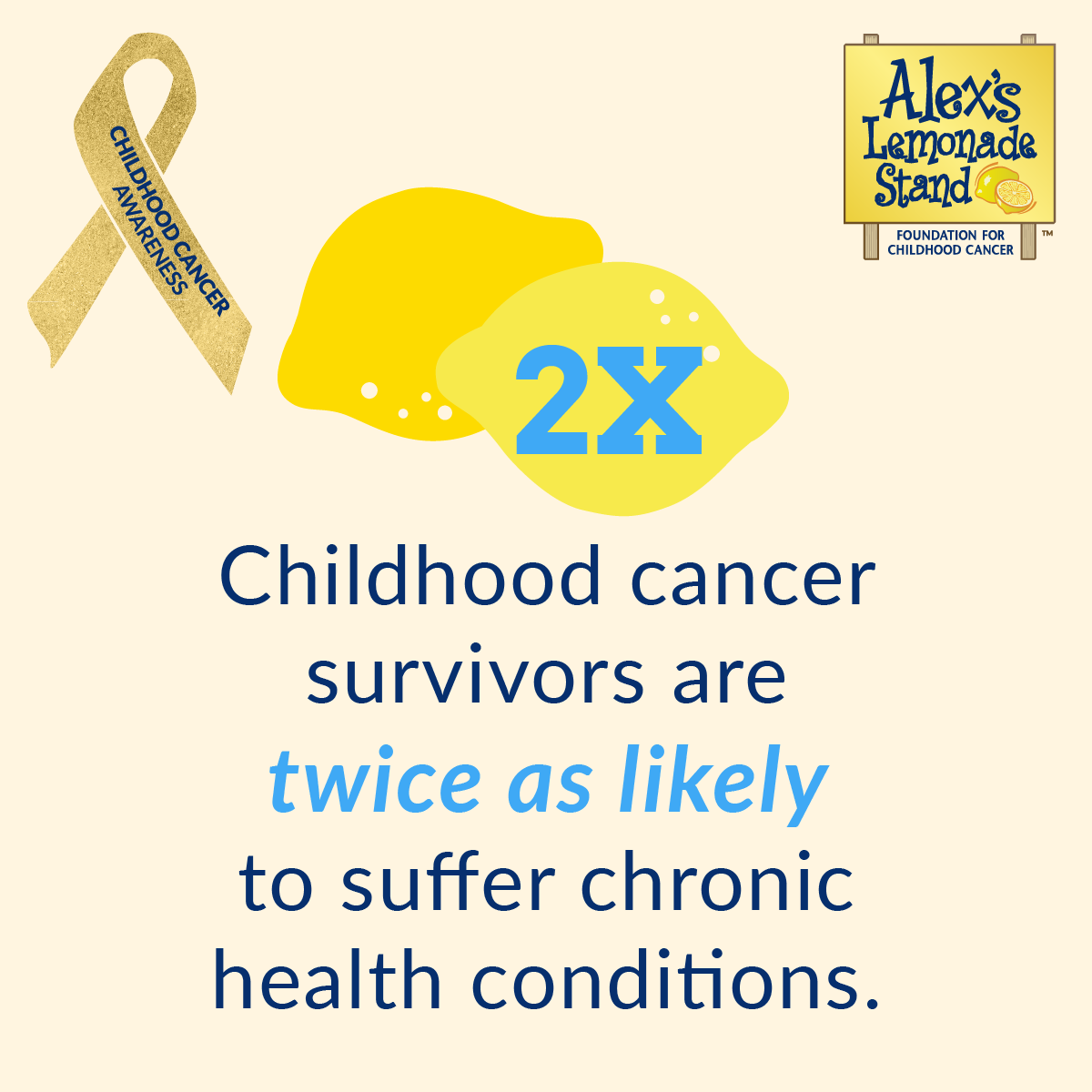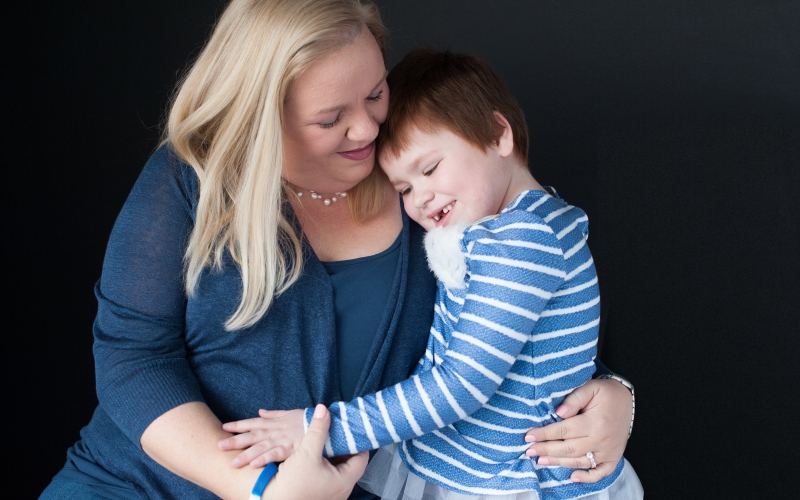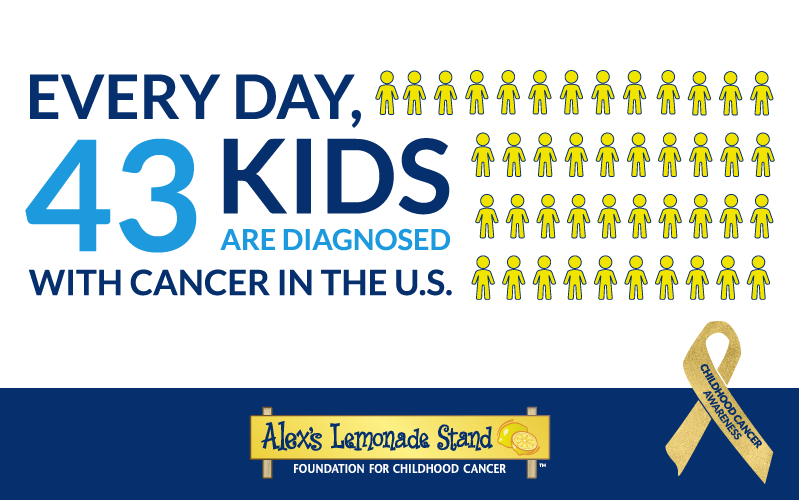By: Trish Adkins
Every day, everywhere, children are diagnosed with cancer. Right now, children are in hospitals receiving frontline treatment following a diagnosis. Other children are beginning a clinical trial following a relapse. Still others face long-term side effects from their treatment.
As these children fight for their lives, researchers, families and other supporters are working hard to raise awareness about the need to find safer treatments and more cures.
Here are the 10 facts you need to know about childhood cancer:
1. In the U.S., 43 children are diagnosed with cancer each day.
In 2018, this added up to over 15,000 children and adolescents (ages 0-19), who were diagnosed with one of the several different types of cancer.
2. In 2019, cancer remains the leading cause of death by disease in American children.
Approximately 1,800 children die each year from cancer.
3. Five-year survival rates for childhood cancer continue to increase overall; but for some types of cancer, survival rates remain terrifyingly low.
Currently, 84% of children diagnosed with cancer in the U.S. are alive at least five years after diagnosis. However, this does not mean these children are cancer-free or out of treatment. In addition, cancers like diffuse intrinsic pontine glioma (DIPG) still have survival rates of 0-percent.
4. There are approximately 429,000 survivors of childhood cancer in the U.S.*
Survivors may suffer long-term side effects as a result of the cancer treatments they received. Children who were treated for cancer are twice as likely to suffer chronic health conditions later in life versus children without a history of cancer.
 5. Globally, the burden of childhood cancer is even larger.
5. Globally, the burden of childhood cancer is even larger.
Every year, an estimated 300,000 new cases of cancer affect children worldwide. In low- and middle-income countries, only 20-percent of children who are diagnosed will survive. The World Health Organization believes this number is undercounted due to many cases of childhood cancer that may go undiagnosed and a lack of comprehensive childhood cancer registries in some countries.
6. Childhood cancer not only kills; it steals millions of years of healthy life away from the children who are fighting the disease.
In 2017, researchers estimate that cancer stole 11.5 million years of healthy life away from children. Treatment, long-term side effects and the disease itself severely impact their quality of life.
7. Only a small portion of the U.S. federal budget for cancer research is dedicated to childhood cancer.
In 2019, the National Cancer Institute budget is $5.74 billion, giving childhood cancer just a tiny piece of the pie. Yet, more research is critically needed to find better treatments that cause fewer side effects. It is up to all of us to fill the funding gap and make more childhood cancer research possible.
8. September is Childhood Cancer Awareness Month, but childhood cancer does not just happen in one month.
At ALSF, we know childhood cancer. We are aware of the burden and fear that cancer deposits in the lives of children and their families. We are aware of the cost of traveling for treatment and the stress that cancer places on the finances of families during the battle. We are aware of the long-term side effects of cancer and treatment. And we know with awareness, fundraising and research, we can and will find cures for childhood cancer.
9. Research works.
The burden of childhood cancer is staggering. But, research works. Since 2005, supporters like you have enabled Alex’s Lemonade Stand Foundation (ALSF) to fund nearly 1,000 research grants. These grants have increased the number of research projects happening in institutions around the world, giving hope to children desperately waiting for cures. These grants have also supported landmark FDA approvals for pediatric cancer, including CAR-T immunotherapy for the treatment of relapsed leukemia and Vitrakvi for the treatment of rare cancers with the NTRK fusion.
10. We can each make a difference.
Curing childhood cancer is not just a product of fundraising or volunteering or even the result of a breakthrough that happens in a lab. It is not just one successful treatment for one child or one donation that makes cures possible. Curing childhood cancer is a combination of all of these elements and the people working together for one purpose that will save future generations.

You can be part of the movement to end childhood cancer. Learn more about how you can get involved, fundraise and help children with cancer.
Sources: National Center for Biotechnology Information, National Cancer Institute, World Health Organization, National Institutes of Health, Lancet
*As of 2015, most recent date for which data is available



